Retro Replay Review
Gameplay
Quest for Tanda delivers a classic turn-based RPG experience that blends strategic decision-making with light resource management. You begin by selecting one of three distinct heroes—Skeeve, the quick-witted mage; Garkin, the stalwart warrior; or Frumple, the eccentric scholar—each offering subtle variations in stat growth and spell access. As you traverse the 8×7 grid of Khlad, every choice to move, rest, eat, drink, or cast a spell tightens the bond between you and the world, creating a measured but engaging pacing.
(HEY YOU!! We hope you enjoy! We try not to run ads. So basically, this is a very expensive hobby running this site. Please consider joining us for updates, forums, and more. Network w/ us to make some cash or friends while retro gaming, and you can win some free retro games for posting. Okay, carry on 👍)
The core loop revolves around exploration and combat: after each move, there’s a chance to encounter enemies ranging from lowly kobolds to Istvan’s elite guards. Combat is straightforward—select your attack, spell, or defensive maneuver—and watch the dice roll decide your fate. Though simple by modern standards, the tension of low health or dwindling provisions keeps you on your toes. Balancing food and water supplies with healing spells ensures that even a short journey between towns feels meaningful.
Difficulty settings add replay value: on Easy mode, you receive crucial guidance in the North Peninsula town to track down Istvan, making progression smoother for newcomers. Hard mode, by contrast, demands you piece together clues from various villages to locate a boat and cross to Istvan’s island lair. This layered approach encourages exploration and rewards attention to local rumors, turning each conversation with townsfolk into a potentially vital lead.
Despite its straightforward mechanics, Quest for Tanda surprises you with subtle depth. Spellcasting isn’t just a fireball on cooldown—each magician’s school offers utility spells like protective wards or illusion tricks that can turn the tide of battle. Managing these alongside physical attacks gives each character role a clear purpose. The concise menu system—Rest, Eat, Drink, Move, Cast Spell, Check Stats, Quest Reminder—keeps you immersed without overwhelming you with submenus.
If there’s a single drawback, it’s the occasional grind when searching for obscure hints in Hard mode. However, this grind feels consistent with the game’s old-school DNA, and veterans of 80s RPGs will likely relish the sense of accomplishment when they finally unearth Istvan’s hideout.
Graphics
Crafted in GFA Basic, Quest for Tanda’s visuals embrace retro charm. Pixel art characters and environments are rendered in a limited color palette, but clever use of shading and color contrast imbues each town and dungeon with a unique personality. While you won’t find high-resolution textures or dynamic lighting, the simplicity of the style works in the game’s favor, evoking nostalgia for early PC RPGs.
Character sprites are small but expressive. Skeeve’s robe flows as he moves, Garkin’s armor gleams under a rudimentary but effective highlight, and Frumple’s oversized spectacles comically bob. Enemy designs range from generic goblins to Istvan’s distinctive sorcerer minions, ensuring that each combatant is visually recognizable at a glance. The grid-based map view provides an overhead perspective that’s easy to navigate and reinforces the strategic feel of exploration.
Animation is sparse but purposeful. Spell effects such as flickering flames or shimmering shields play out in a handful of frames, conserving memory while still delivering a sense of impact. Townspeople appear as static NPCs, but their brief talking animations—hands waving or heads nodding—add a touch of life to otherwise static backdrops. Overall, the graphics serve the gameplay rather than overshadow it, reinforcing the game’s accessibility.
Menus and HUD elements stick to a monochrome layout, prioritizing readability over flash. Icons for health, food, and water are intuitive, and text prompts are clear, minimizing the chances of accidental misclicks. Although the UI may feel rudimentary compared to modern standards, its straightforward design helps keep the focus on the adventure itself rather than on complex interface navigation.
Story
At its heart, Quest for Tanda is a rescue tale steeped in the lighthearted humor and whimsical worldbuilding of Robert Asprin’s Myth series. You are one of Aahz’s loyal knights, summoned to save his daughter, Tanda, from the clutches of the malevolent sorcerer Istvan. The premise is classic fantasy fare, but periodic quips and tongue-in-cheek dialogue remind players that this world doesn’t take itself too seriously.
Conversations with townsfolk often feature playful nods to Asprin’s trademark wit. A blacksmith may grumble about the quality of dwarven ale, while a merchant warns you that “Istvan’s henchmen take no prisoners—and charge extra for baggage handling.” These moments of levity balance the urgency of your mission and encourage you to linger in villages longer than strictly necessary, soaking up the lore and earning extra gold.
Plot progression is straightforward: gather information, assemble supplies, and confront Istvan. However, variable difficulty routes—searching for a boat in Hard mode or receiving a direct tip in Easy mode—introduce branching narrative beats that subtly reshape your journey. You may find yourself piecing together cryptic clues from three different towns, each offering half-truths and rumor. This scavenger-hunt style narrative deepens immersion, making the final confrontation feel earned.
While the story doesn’t revolutionize the genre, it succeeds in delivering a focused quest with memorable characters. Companions you recruit along the way—be it a rogue with a taste for treasure or a cleric devoted to healing—offer short character arcs that enrich the main storyline without dragging the pace. By the time you face off against Istvan, you understand the stakes and care about Tanda’s fate.
Overall Experience
Quest for Tanda stands as a compelling throwback to the early days of PC RPGs. Its streamlined mechanics, grid-based exploration, and periodic turn-based battles capture the essence of 80s game design while injecting enough modern sensibilities—like clear quest reminders and adjustable difficulty—to keep newer players engaged. The balance between combat, resource management, and dialogue-driven clue gathering creates a satisfying rhythm.
While the graphics and sound are modest, they complement the game’s nostalgic appeal rather than detract from it. Fans of minimalist pixel art will appreciate the handcrafted sprites and environment tiles, while those longing for a richer soundtrack might find the audio palette sparse. Yet the lack of bells and whistles allows the core gameplay and story to shine through, unencumbered by unnecessary complexity.
Quest for Tanda is ideally suited for RPG enthusiasts who value exploration, simple yet strategic combat, and a dash of humor. Its moderate length—typically around 10 to 15 hours to complete—makes it approachable for weekend warriors, and the two difficulty modes ensure both newcomers and genre veterans find a suitable challenge. The game’s greatest strength lies in its ability to make every grid move feel consequential, whether you’re risking a night in the wilderness or gambling on a rumor in a shady tavern.
In sum, Quest for Tanda offers a charming, bite-sized RPG journey that pays homage to Robert Asprin’s Myth series while standing on its own merits. Its blend of crisp gameplay loops, personable characters, and old-school ambiance make it a worthy purchase for anyone seeking a heartfelt rescue adventure with a hint of nostalgic flair.
 Retro Replay Retro Replay gaming reviews, news, emulation, geek stuff and more!
Retro Replay Retro Replay gaming reviews, news, emulation, geek stuff and more!
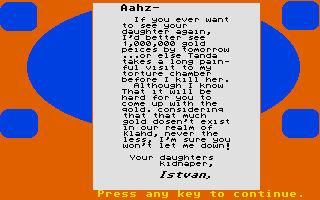
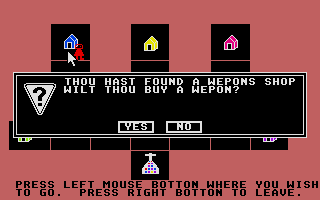
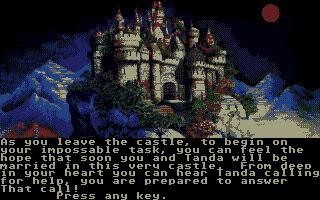
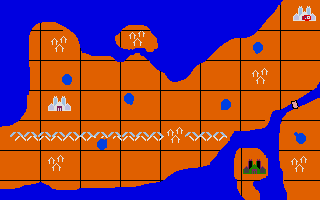
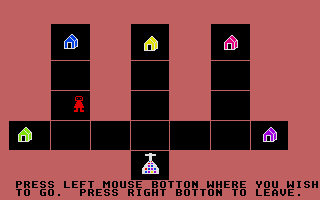
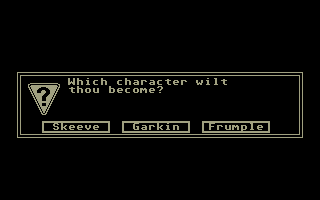



Reviews
There are no reviews yet.